Southern Indiana Purdue Ag Center (SIPAC)

The Southern Indiana Purdue Agricultural Center (SIPAC) is located in the Mitchell Plain natural region in Dubois County. It is a 1,331 acre working farm, research and education facility designed to address practical farm and natural resource management problems. SIPAC provides training opportunities for farmers, landowners, foresters, and other natural resource professionals. The initial acquisition for the farm occurred in January 1953 when local county extension agents, forestry/wood manufacturing industry and farmers requested the “Southern Indiana Forage Farm” be created. Additional acres were purchased and dedicated in 1966 and 1967 as the Patoka Forestry Project (PFP). The farm was renamed “Southern Indiana Purdue Agriculture Center (SIPAC)” during this time. FNR faculty and staff have played an active role in land management from the creation of SIPAC. This is also the location of a Purdue Regional Extension Forester since the mid-1960s. Today, it is a recognized center of forestry and natural resources extension education and applied research in southern Indiana. It continues to provide educational opportunities for landowners and professionals in the form of workshops, short courses, field tours, and demonstrations. It also provides hands-on training each summer for Purdue forestry student interns.
Property Statistics
- Acres: 1,331 acres, 665 forested
PAC Information
More About Cunningham Forest
- How depleted forest land would respond to forest management – initial research when acquired
- Herbicide trials on controlling different nonnative invasive species and the midstory
- Prescribed grazing using goats
- Prescribed fire impacts on oak regeneration
- The American Chestnut Foundation (TACF) research
- Hardwood Tree Improvement and Regeneration Center (HTIRC) research
- Early natural successional old fields, hardwood plantations, pine plantations on old farm fields, oak-hickory forest (most prevalent), tulip-poplar, and mixed mesophytic.
- Bordered by Patoka Lake and IDNR Division of Parks and Reservoirs
- Springs that flow year-round
- 19 ponds on property making up about 13 acres of water surface
- Forest composition:
- 298 acres (45%) oak-hickory forest
- 194 acres (29%) mixed hardwoods
- 62 acres (9%) tulip poplar-ash-cherry forest
- 25 acres (4%) maple-beech forest
- 7 acres (1%) sycamore-gum-elm forest
- 36 acres (5%) pine plantations
- 19 acres (3%) hardwood plantations
- Prescribed Grazing extension event – August 2023
- Invasive Species Workshop – September 2023
Please contact the property manager for a copy of this property’s management plan.
Superintendent:
Jason Tower
Southern Indiana Purdue Agricultural Center
11371 East Purdue Farm Road
Dubois, IN 47527
Phone: 812-678-4427
Email: towerj@purdue.edu
Property Manager:
Ron Rathfon, Extension Forester
Purdue University, Dept. of Forestry & Natural Resources
11371 E Purdue Farm Rd
Dubois, IN 47527
812-678-5049
Email: ronr@purdue.edu
 FNR Forestry Woodland summer intern marking timber for standing bid sale. Photo by Mikaela Scherzinger.
FNR Forestry Woodland summer intern marking timber for standing bid sale. Photo by Mikaela Scherzinger. 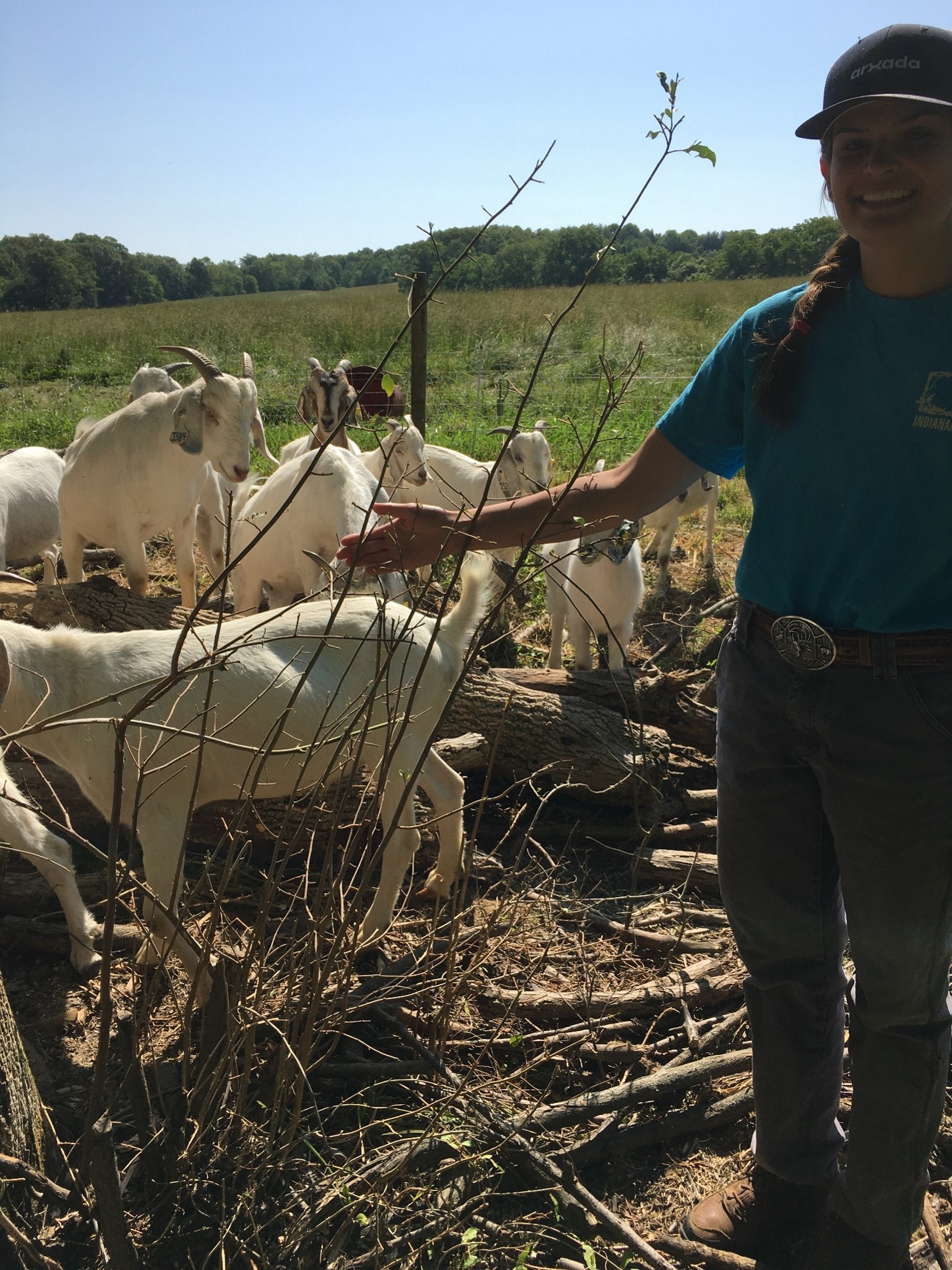 Checking non-native invasive species management utilizing goats for grazing with FNR Forestry Woodland summer intern. Photo by Ron Rathfon.
Checking non-native invasive species management utilizing goats for grazing with FNR Forestry Woodland summer intern. Photo by Ron Rathfon. 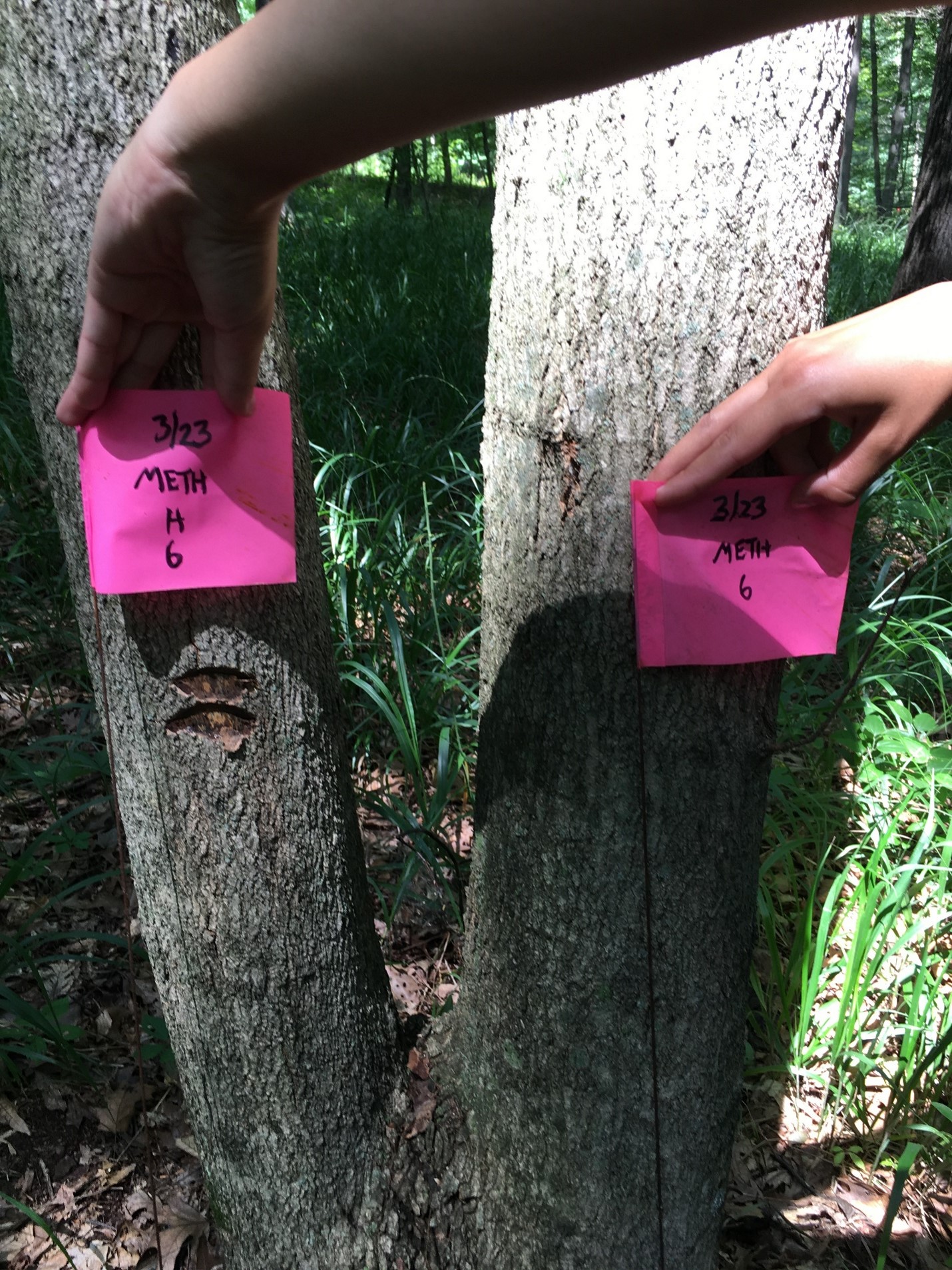 Hack-n-squirt and drill-n-fill trials utilizing different herbicide concentrations on different species. Photo by Ron Rathfon.
Hack-n-squirt and drill-n-fill trials utilizing different herbicide concentrations on different species. Photo by Ron Rathfon. 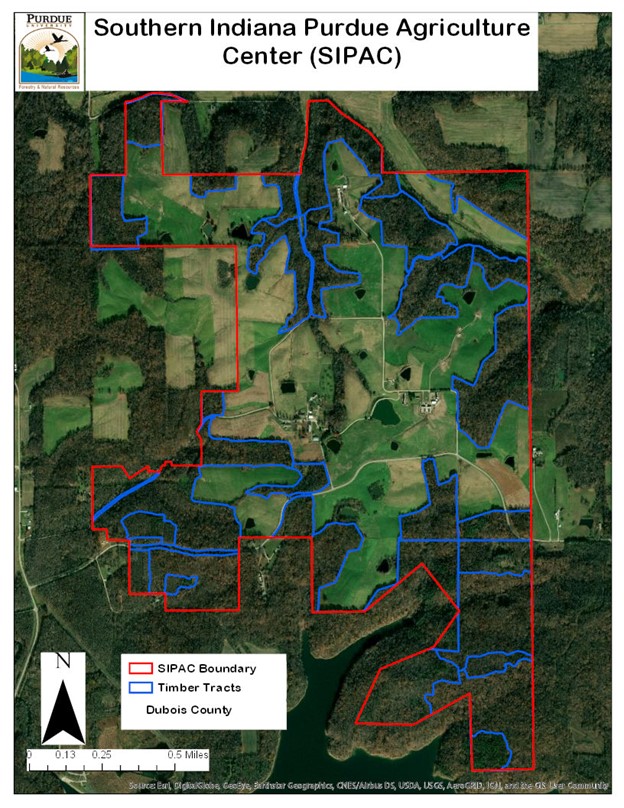
 Removal of American chestnut planation (Castanea dentata) after research was completed in 2023. Photo by Mikaela Scherzinger.
Removal of American chestnut planation (Castanea dentata) after research was completed in 2023. Photo by Mikaela Scherzinger. 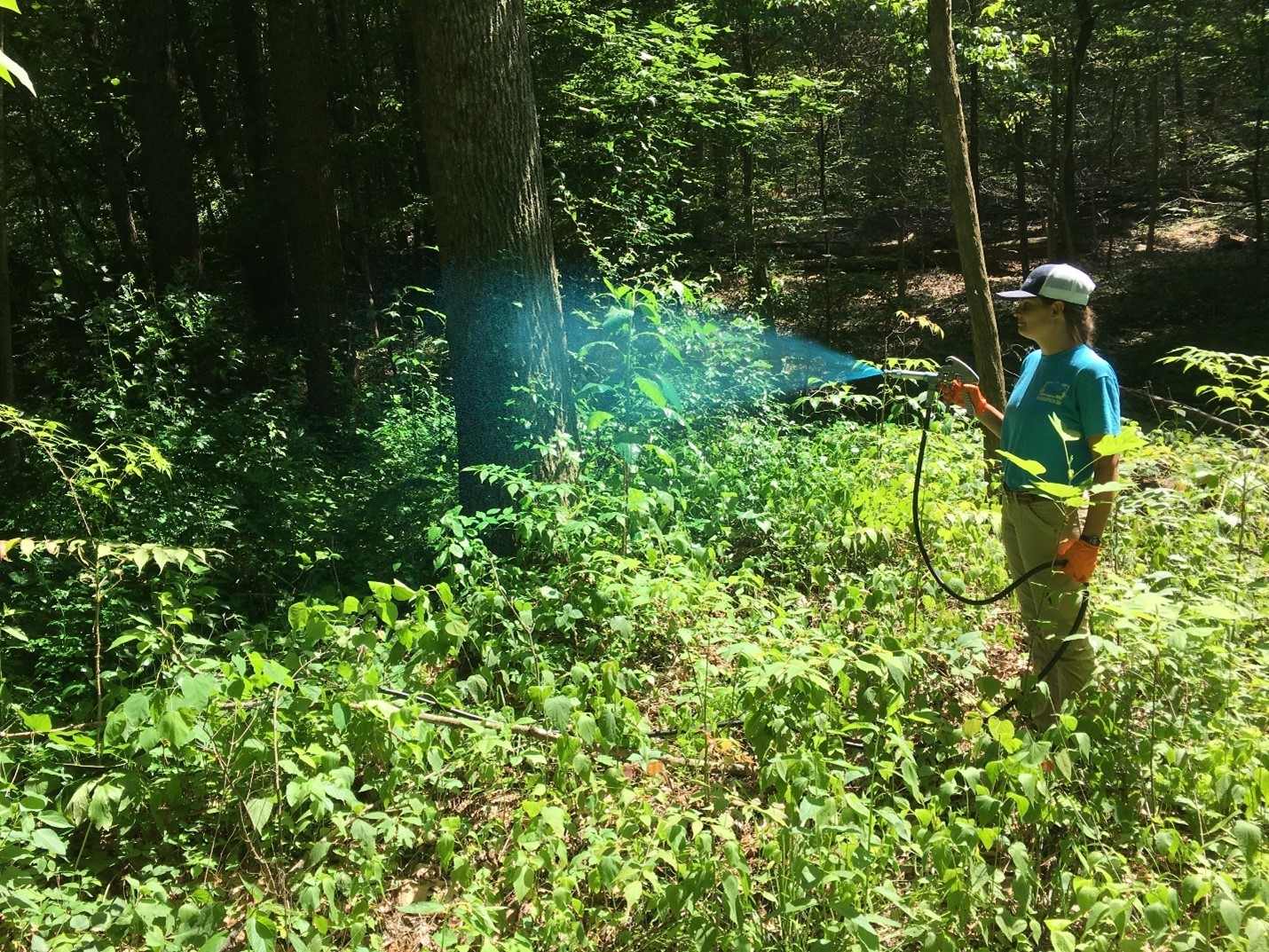 FNR Forestry Woodland summer intern spraying non-native invasive species. Photo by Ron Rathfon.
FNR Forestry Woodland summer intern spraying non-native invasive species. Photo by Ron Rathfon. 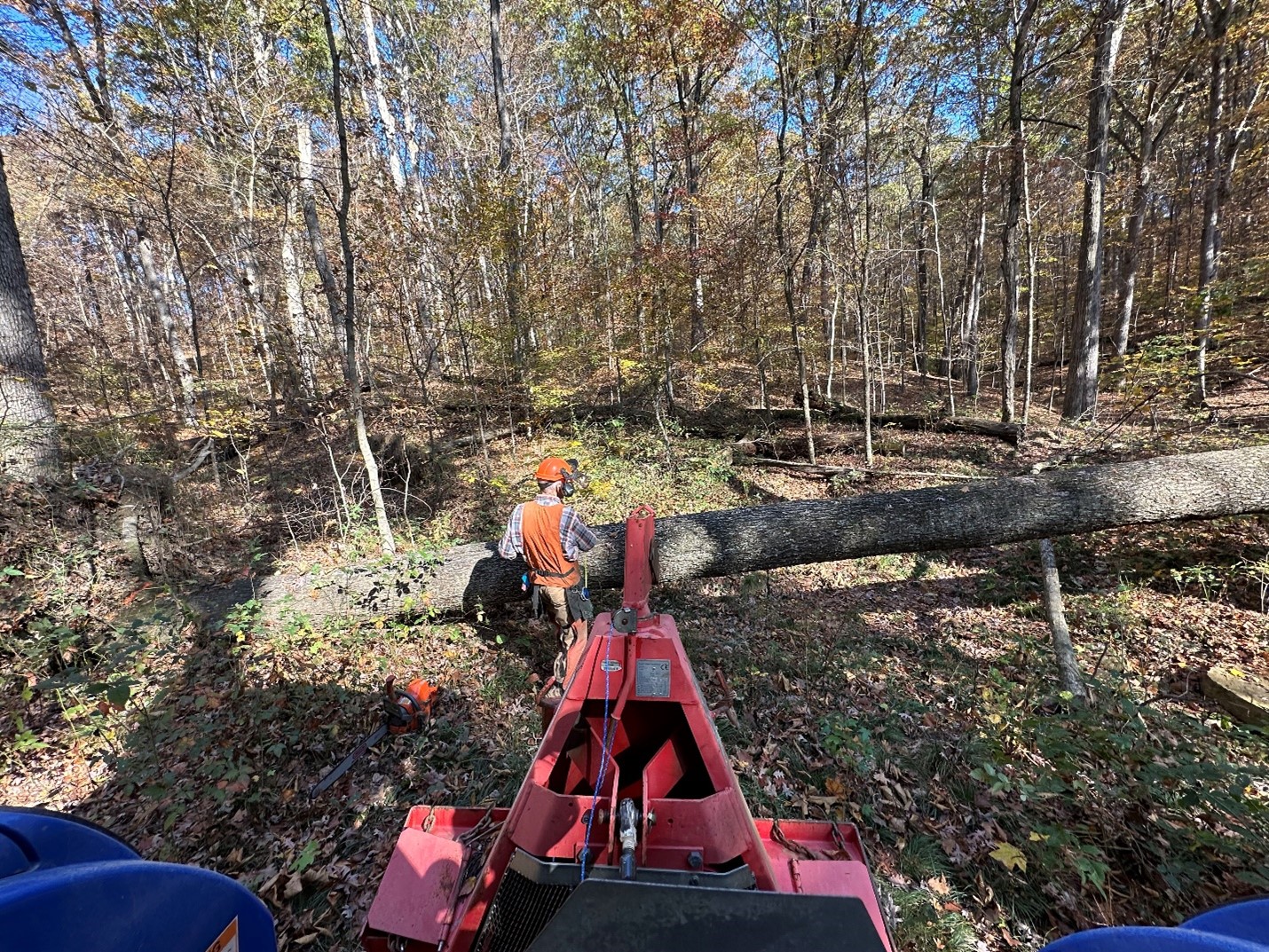 Salvage harvesting fallen timber. Photo by Mikaela Scherzinger.
Salvage harvesting fallen timber. Photo by Mikaela Scherzinger. 